A GRADING SYTEM for splinters - strategycorner with Mammuter #2

Table of contents
- Ruleset Earthquake
- Protecting your splinters against Earthquake
- Grading system for Splinters
- Top tier Summoners
- Full list of grades for the summoners
- Battle examples
- Closing remarks
This is the second post in my series on Splinterlands strategies where I discuss different rulesets. The first post is available here:
Strategycorner with Mammuter #1 - Ruleset Super Sneak
Here I will cover the rule Earthquake. I will also introduce a grading system for Splinters and use this to describe what summoners are well suited for this ruleset. I will continue to use this grading system in future posts.
Ruleset Earthquake

When the Earthquake ruleset is active, splinters that do not fly will be damaged by the ravaging ground. Earthquake damages armour first, and health last. This means that flying monsters will survive relatively longer than they usually do.
Protecting your splinters against Earthquake
Since Earthquake damages armour before health, it means that armour will be especially important under this ruleset. Bear in mind that if a splinter is flying, the armour will not be as important.
As I see it, there are two ways of dealing with this ruleset: You fly, or you armour up.
You might ask?

Well, we might, but Splinterlands is all about optimizing your teams' strength without wasting any mana. For instance, the following team composition does not make sense in Earthquake.
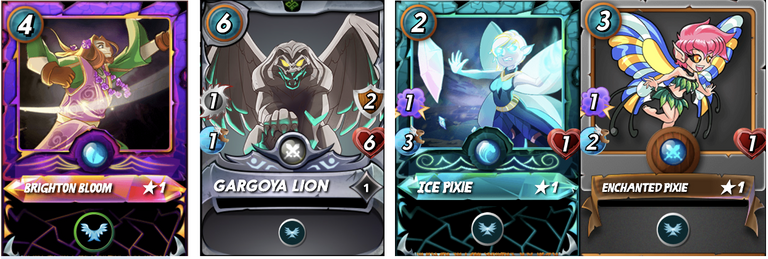
This is because all the monsters already have the flying ability, and so Brighton Bloom would be better replaced by a summoner which gives the monsters something they don't have.
Grading system
In this post, I am also launching the Mammoth rating system. This will be a 15 - scale grading system with grades ranging from the letters A to E. I will base the grades on my personal analyses of the win rates of teams that contain the summoner or splinter in different rulesets. I will also base it on my subjective view since some things are difficult to describe with numbers ;)

| Value | 1 | 2 | 3 | 4 | 5 | 6 | 7 | 8 | 9 | 10 | 11 | 12 | 13 | 14 | 15 |
|---|---|---|---|---|---|---|---|---|---|---|---|---|---|---|---|
| Grade | A+ | A | A- | B+ | B | B- | C+ | C | C- | D+ | D | D- | E+ | E | E- |
Here A+ is the best possible score, corresponding to the big Mammoth. A+ will only be given to the summoners that are the top tier for the rulesets given the league.
I will be doing the grading of summoners and monsters under different rulesets. For this post, the grades will be based on upper Silver and lower Gold-league (rankings 1400-2200) because that is where I am currently playing. Note that the relative power of Splinters changes over time as the game introduces new cards. Therefore these posts have to be read with the publication date in mind.
Summoners
Here is a figure of the win rates of different summoners under the Earthquake ruleset. Summoners that were used in less than five matches were not included in this analysis. One important thing to note here is the summoners' names above the 50% win rate line (dashed line in green). These summoners win more than they lose when Earthquake is active.
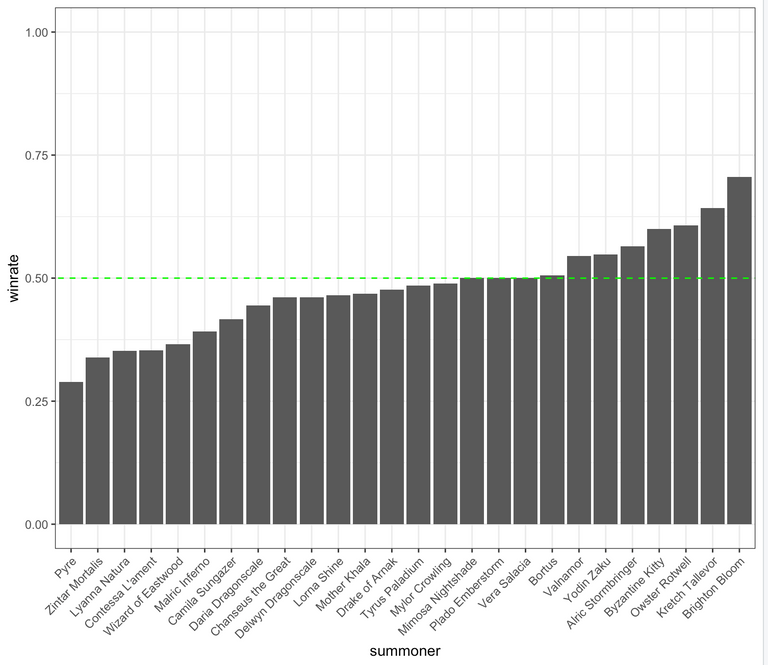
For this analysis, we looked at dataset of 9000 randomly selected matches with ruleset Earthquake. Some summoners are played way more often than others. The following figure shows the play rate of the different summoners in the matches we looked at.
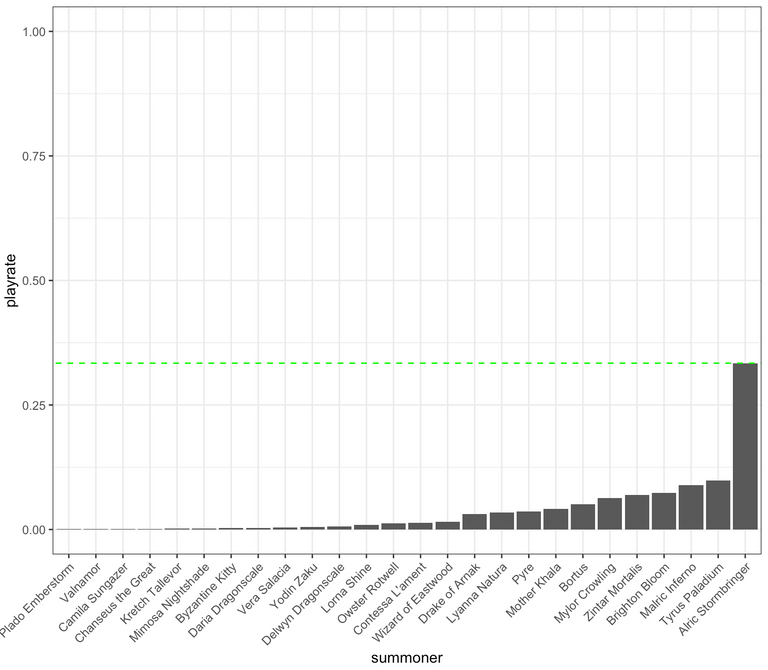
Conclusion: Alric is super popular.
Based on the first figure, the top tier summoners, which also are readily available to most people, include Brighton Bloom, Kretch Tallwvor and Owster Rotwell (cheap to rent). Here are the cards of some commonly seen summoners.
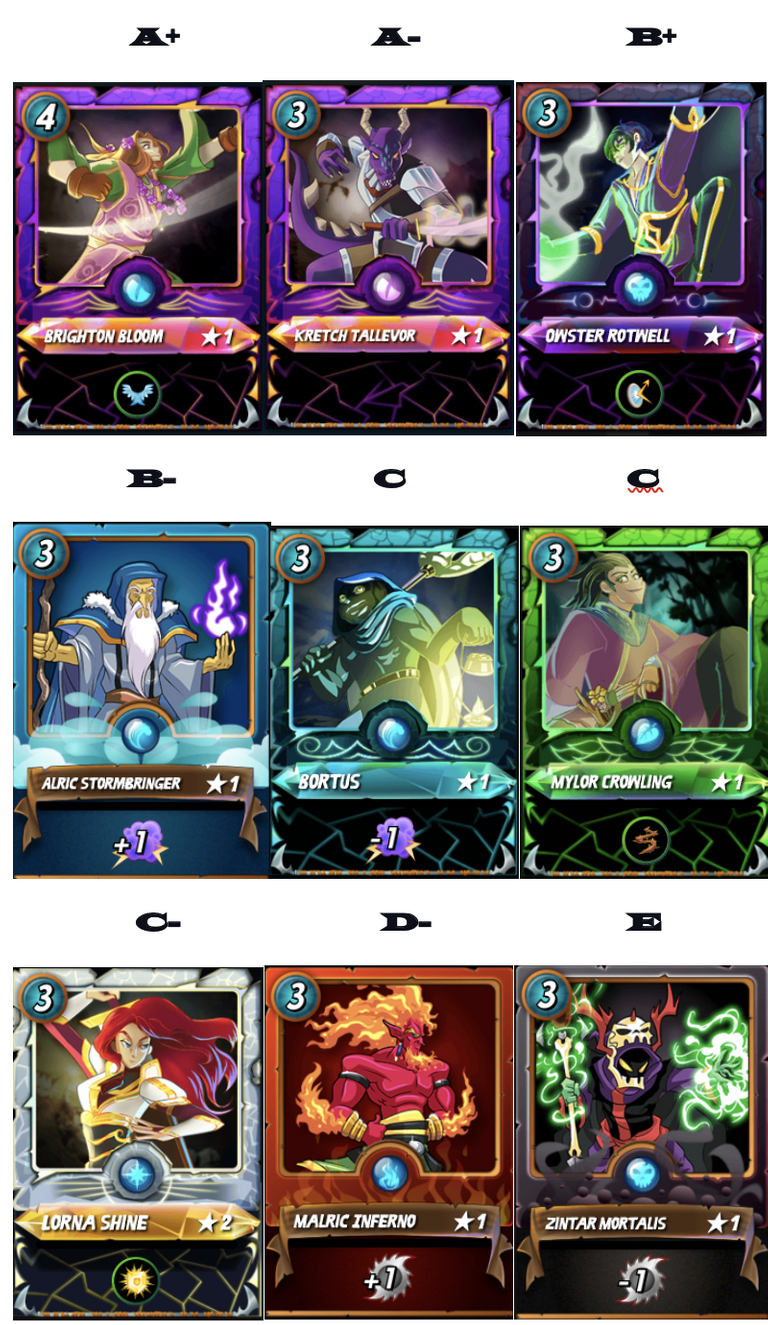
Brighton Bloom gives all monsters flying, which is direct protection against Earthquake. Kretch Tallevor is more surprising. My guess is that since Kretch is currently among the cheaper summoners to upgrade, he is often paired with higher lvl cards. Apparently, Owster's magic protection also works quite well. This may be because many go with Alric, which has multiple flying cards, and Owster counters this well.
Full grade list
Here is the complete list of grades for all the summoners that were represented in our 9000 match dataset.
| Summoners | Grades | |
|---|---|---|
| 26 | Brighton Bloom | A+ |
| 25 | Kretch Tallevor | A- |
| 24 | Owster Rotwell | B+ |
| 23 | Byzantine Kitty | B+ |
| 22 | Alric Stormbringer | B- |
| 21 | Yodin Zaku | B- |
| 20 | Valnamor | B- |
| 19 | Bortus | C |
| 18 | Vera Salacia | C |
| 17 | Plado Emberstorm | C |
| 16 | Mimosa Nightshade | C |
| 15 | Mylor Crowling | C |
| 14 | Tyrus Paladium | C |
| 13 | Drake of Arnak | C- |
| 12 | Mother Khala | C- |
| 11 | Lorna Shine | C- |
| 10 | Delwyn Dragonscale | C- |
| 9 | Chanseus the Great | C- |
| 8 | Daria Dragonscale | D+ |
| 7 | Camila Sungazer | D |
| 6 | Malric Inferno | D- |
| 5 | Wizard of Eastwood | E+ |
| 4 | Contessa L'ament | E+ |
| 3 | Lyanna Natura | E+ |
| 2 | Zintar Mortalis | E |
| 1 | Pyre | -E |
Battle examples
In this battle, I focused on putting up a solid defence and letting the Earthquake do the work for me. After the first round, the Earthquake deals seven damage to the opponent team for free, which pretty much decides the outcome.
Closing remarks
I hope this post provides some insight into what the ruleset Earthquake is all about! :)
By writing this, I can for sure say that I learned something.
Credits to @Kalkulus for helping me make this post. Follow him for similar content to this coming up.
If you want to join Splinterlands and at the same time support my account, here is my promo link:
Until next time,

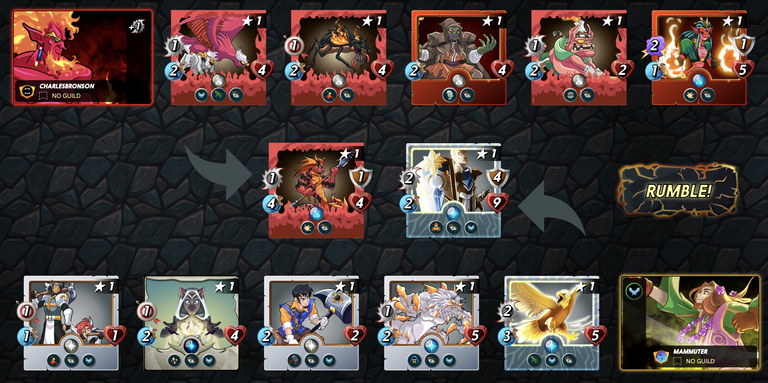
An additional note about the dataset used for this post. Matches were selected if they had the Earthquake ruleset, and we also included those that had additional rules. This means that the current data represents an average over all rule combinations that include Earthquake. Combinations such as Lost Magic and Earthquake will make Alric very undesirable to use for that specific match, even though he seems to be by far the most popular pick overall for Earthquake.
Please do more of these for other conditions. Thank you for this.
Appreciated!
I am working on one for Noxious Fumes (the poison ruleset) at the moment. It will be released later this week.